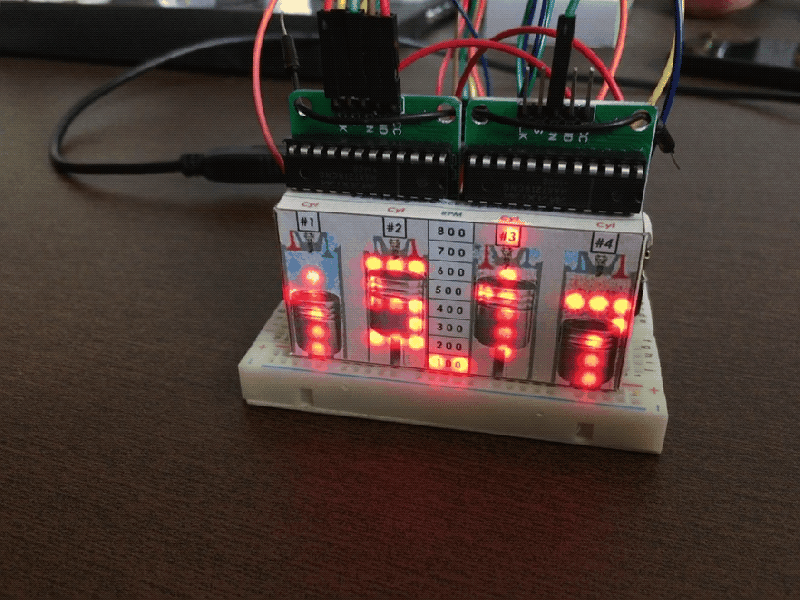We love a good clock build around here, especially if it tells time in a unique way. This 4-stroke digital clock designed by [lagsilva] takes the checkered flag in that category. As it displays the time, it also demonstrates the operation of an internal combustion engine. The numbers take the form of pistons and dance an endless repetition of intake, compression, combustion, exhaust.
The clock’s digits are made from two LED matrices driven by an Arduino Uno and a couple of MAX7219 driver boards. The dots that form the digits move up and down the matrices in 1-3-4-2 firing order. As each piston-digit reaches top dead center, its number lights up. This makes it easy to see the firing order, even at higher RPM values.
Our favorite thing about this clock is the variable RPM setting. There’s a 10k pot around back that adjusts the speed of the pistons between 100 and 800 RPM, and it’s configured to accurately represent piston movement at each increment. Floor it past the break to watch the clock rev up and slow back down.
Although it’s difficult to read the time at 800 RPM, it’s awesome to see a real-time visualization of cylinder movement at the average idle speed of a passenger car. We think it might be neat to rev the engine another way, like with an arcade throttle lever or a foot pedal.
If you like the idea of a constantly-moving clock but prefer an analog readout, take a minute to look at this clock without a face.
















Interesting, though watching this for any length of time can be exhausting,
good thing my invective is suitably throttled & muffled lest I choke on the flow…
Ugh…I get what they were trying to do, but man that’s tough to look at.
I wonder if it would be less nauseating if, instead of moving up and down, the numbers just blinked in time with the speed of the pistons. So as you “throttled up” the engine, the numbers would blink faster and faster until they eventually appear solid.
I thought you were a bit harsh there, then I watched the video!
your suggested improvement would help especially if each detonation showed a digit and at the end of each minute the rpm reached full speed you’d get the steady numbers.
you’d also need more leds to show more stroke so as not to lose te overall affect.
But petrol heads would more likely go fo a sectioned engine with the digits set in the back of each cylinder being uncovered by the slowly reciprocating chrome plated pistons.
For anyone with OCD, that gif has a 3-4-2-1-3-4-2 firing order.
Pretty sure that would make for a rough running engine.
What makes me sad is that one could literally remove the last five (out of thirteen total) frames and have it loop nicely instead.
Can we PLEASE stop posting those multi-megabytes animated GIFs?!
Hmm…. can’t say I’m a fan of the “clock” or the “Engine Simulation”, but, there’s something interesting about the paper printout over the off-the-shelf LED matrix. I’ll be filing that one away for a later date.